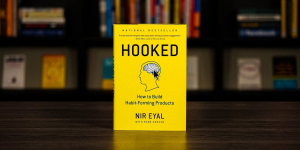Hooked How to Build Habit-Forming Products
Building habit-forming products is not just about creating something people use occasionally; it’s about creating something they can’t live without. In this comprehensive guide, we’ll delve into the psychology behind habit formation and provide actionable strategies to help you create products that users keep coming back to.
Understanding Habit Formation
To build habit-forming products, it’s crucial to understand how habits are formed. Habits consist of a cue, a routine, and a reward. The cue triggers the behavior, the routine is the behavior itself, and the reward is what reinforces the behavior, making it more likely to recur in the future.
The Hook Model
Nir Eyal’s Hook Model provides a framework for building habit-forming products. It consists of four phases: Trigger, Action, Variable Reward, and Investment. By understanding and implementing each phase effectively, you can create products that form strong user habits.
Creating Compelling Triggers
Triggers are external or internal cues that prompt users to take action. There are two types of triggers: external triggers, which come from the environment, and internal triggers, which come from within the user’s mind. By identifying and leveraging both types of triggers, you can increase user engagement and create habitual behaviors.
Facilitating Action
Making it as easy as possible for users to take action is essential for building habit-forming products. This involves reducing friction in the user experience, simplifying processes, and providing clear calls-to-action. The easier it is for users to engage with your product, the more likely they are to form habits around it.
Providing Variable Rewards
Variable rewards are key to keeping users engaged over the long term. Instead of providing the same reward every time a user takes action, introduce variability to keep them guessing and coming back for more. This could involve offering different types of rewards, such as social validation, personal achievement, or material incentives.

Encouraging Investment
The final phase of the Hook Model is investment, where users put something of value into the product, increasing their commitment and likelihood of returning. This could be in the form of time, data, money, or effort. By encouraging users to invest in your product, you make it more difficult for them to switch to alternatives.
Case Studies and Examples
Throughout this guide, we’ll explore real-world examples of habit-forming products and analyze what makes them successful. From social media platforms like Facebook and Instagram to productivity apps like Slack and Trello, we’ll uncover the strategies and techniques used to keep users hooked.
Building habit-forming products is both an art and a science. By understanding the psychology behind habit formation and implementing the principles of the Hook Model, you can create products that not only meet users’ needs but also become an indispensable part of their lives. Start applying these strategies today to build products that keep users coming back for more.
Sheridan Specialized Building Products LLC
Sheridan Specialized Building Products LLC is a renowned provider of high-quality building materials, specializing in customized solutions for commercial and residential projects. With a focus on innovation and customer satisfaction, Sheridan offers a wide range of products, including insulation, roofing, and siding materials. Their commitment to quality and excellence has made them a trusted partner for contractors, architects, and builders nationwide. Whether you’re planning a new construction project or renovating an existing space, Sheridan Specialized Building Products LLC has the expertise and products you need to bring your vision to life.










